I’ve ridden plenty of big tourers in my time, from Yamaha FJRs and Harley Ultra Limiteds through to full-dresser Indians and Honda Goldwings, the latest of which really impressed me. But whenever I’d tell anyone in the know who’d listen, just how good I think the Goldwing is, invariably they’d nod along, smile and reply with: “I agree with you, but the K 1600 is better.”
This I had to see and feel for myself.

The visually appealing version of BMW’s K 1600 GT you see here is the Sport version, which only relates to the paintwork because apparently Light White/Racing Blue Metallic/Racing Red are sportier colours than the Black Storm Metallic or Meteoric Dust II Metallic that the K 16 is also available in.

Pricing starts at $42,820 plus on-roads for the standard K 1600 GT and, if you want the sportier colour, it’ll set you back an extra $1000. Apart from the paint, the K 1600 GT Sport is identical to the standard model. And while that’s well and truly at the pointy end of affordability, there’s a raft of goodies baked into the K 1600 GT that make it one of the finest touring machines you can buy.

The K 16 in all its guises comes standard with a two-way quickshifter, central locking, an alarm system, engine protection bars, LED fog lights, a dual-speaker audio system and bag of other gizmos like heated grips, rider and pillion seats. There’s ABS, traction control, ride modes, keyless ignition, adjustable electric screen, a huge TFT dash and there’s even a nifty floor-lighting system so you don’t trip on your ground anchor when you’re putting it away at night.
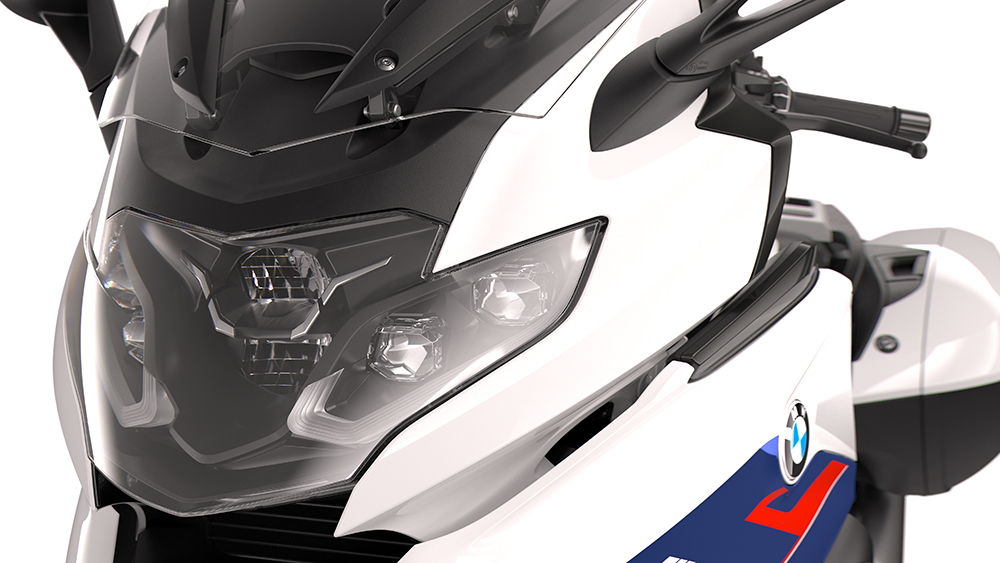
The Beemer’s 1649cc inline six-cylinder powerplant is unique and possibly the greatest thing about the K 16. With a healthy 118kW (160hp) of power on tap at 6750rpm, and 180Nm of torque available at 5250rpm, not only is the K 16’s engine capable of sending you to warp speed in a matter of moments, but the sound is absolutely to die for.

The Euro 5 compliant six-pot mill feels very refined when you’re cruising along, but it’s a monster when it climbs up the rev range – for a physically large bells-and-whistles tourer, it is very, very fast. It would eat a Goldwing for breakfast and spit out the bones.
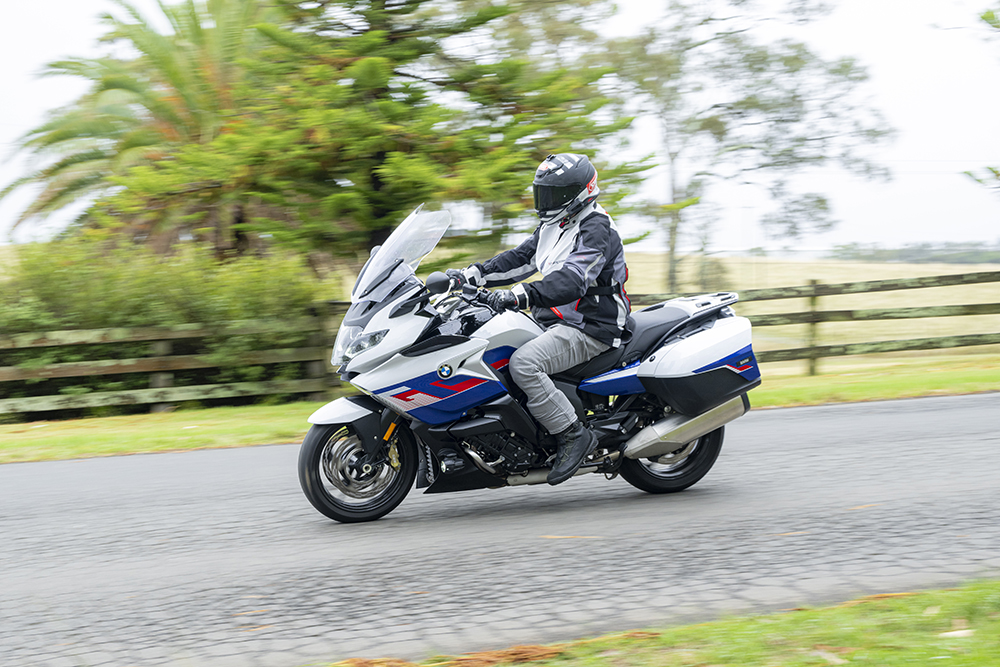
Needless to say, there’s more than enough on tap to cover all situations, from lope-along cruising through to jail-time high jinx and everything in between. The noise emitted from the exhaust system sounds fantastic from start-up to wringing its neck, even with the standard pipes. After riding the K 16, I’m positive the world needs more six-cylinder motorcycles. The engine is certainly the biggest jewel in the GT’s crown, but as luck (or design) would have it it’s not the only shining light the bike boasts.
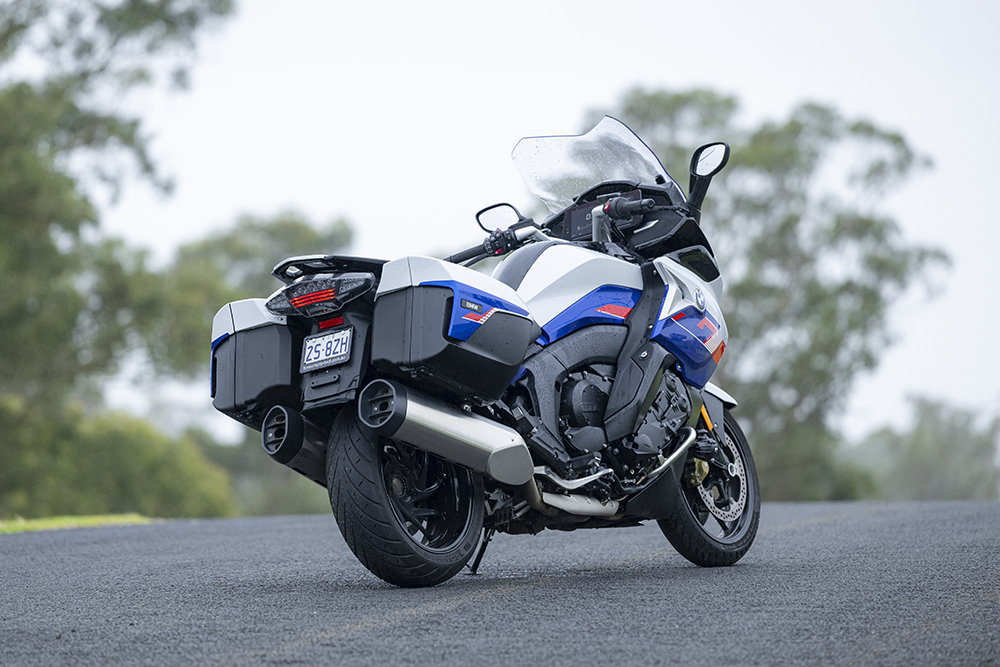
The K 16 is equipped with a two-way quickshifter which works great when hard on the gas and the gearbox is under heavy load. However, when just putting around, gear changes are clunky and there’s a fair amount of tension through the shifter. It isn’t as sweet as other BMW quickshifters that I’ve used, which seems to be a common theme for BMW: some are gorgeous and some are average, and this one falls into the latter category. The occasional false neutral occurred, too, but only momentarily before it found a gear. It’s only a small lack of drive, but it really shouldn’t happen on a bike built by a company that I know can get the system so close to perfect – not to mention on a bike this pricey. What I really like about the quickshifter though is the ability to shift through the six-speed box without the activated cruise control disengaging.

The mighty mill shoots power through a low-maintenance shaft drive that seems to channel the clunkiness of the gear change right through it with a corresponding audible cry of dissatisfaction every time there’s shifting – clunk, clunk, clunk! Speaking of noise, there’s a bit of clunking and banging from the front-end on rough roads as well. It’s not loud and certainly doesn’t feel like a terminal problem, but it’s noticeable. I reckon it’s mostly coming from the Telelever front-end, which in turn rattles the front fairing.

And those are the only negatives I can sook about, because when it comes to suspension performance and outright handling in the big tourer category the K 16 has no equal.

The Beemer is amazingly easy to chuck through corners, and a bike this size has no right to handle this good. It’s ridiculous how it turns in so easily and, as you would expect with a bike weighing in at a hefty 343kg, it’s rock solid. To say I was impressed with the way the K 16 handled would be an understatement, and I shudder to think how good it would be if BMW put the next incarnation on a diet. It’s agile enough to be a bit of fun on tight-ish roads, but on fast to medium corners it’s diabolical fun.

Out on the open road the Dynamic DSA electronic suspension gives the K 16 a magic-carpet ride quality. The porky proportions which are a handling hinderance in other instances add to the ride quality; you’re not thrown off-line in corners, and potholes feel like they’re steamrolled rather than sending you up in the air or slamming force into your spine. The DSA system has a cool automatic levelling system, too, which adjusts to compensate for baggage or pillion pork so there’s no need to stuff around with knobs, rings or clickers.
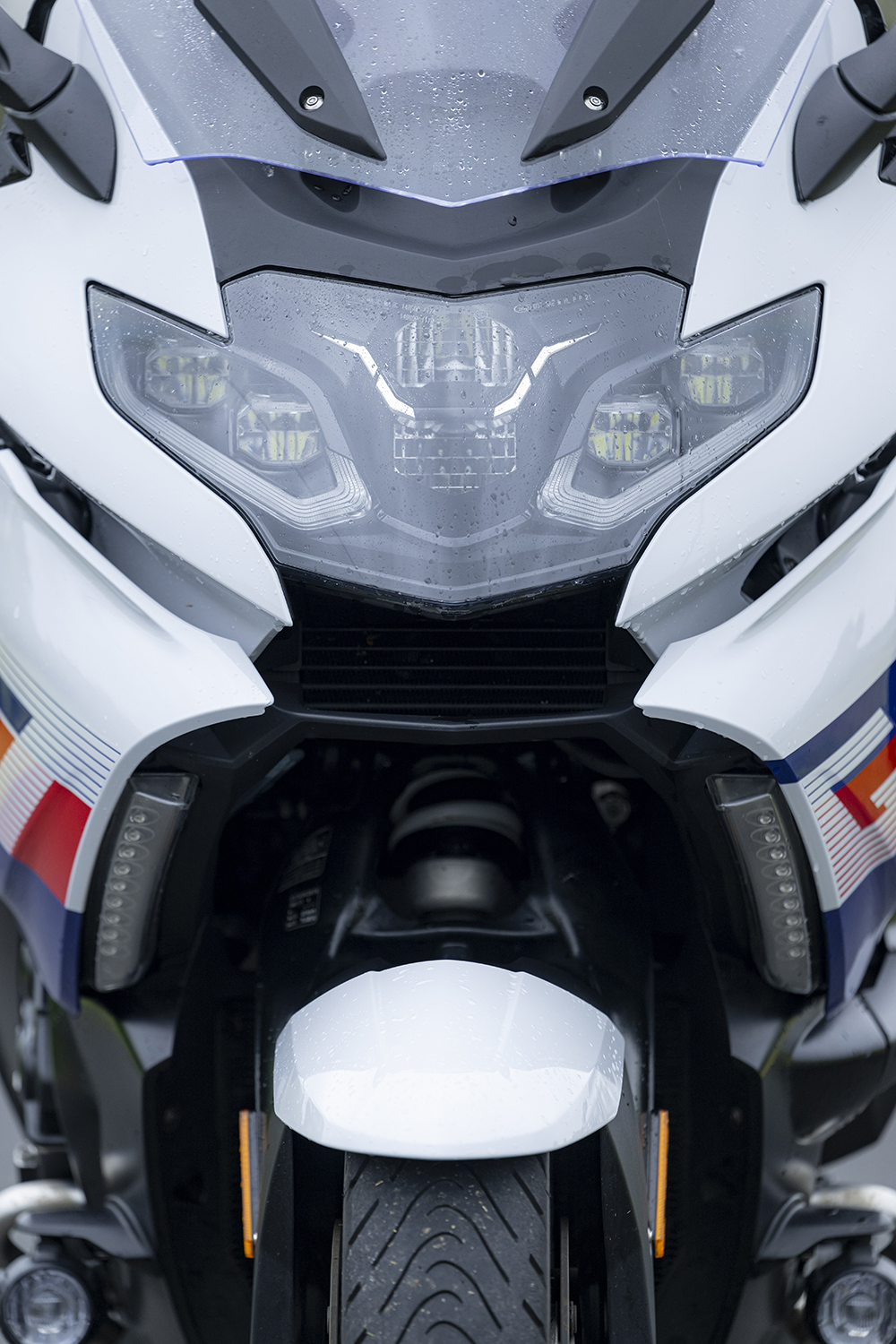
Retarding forward motion is a set of 320mm rotors gripped by two four-piston calipers on the front and a 320mm disc tugged at by another dual-piston caliper on the rear. Both ends are excellent, pulling the K 16 up with relative ease and enough feel through both levers to trail brake into and through corners without going just that bit too hard and destroying yourself – remarkable when you think of the weight they are responsible for.
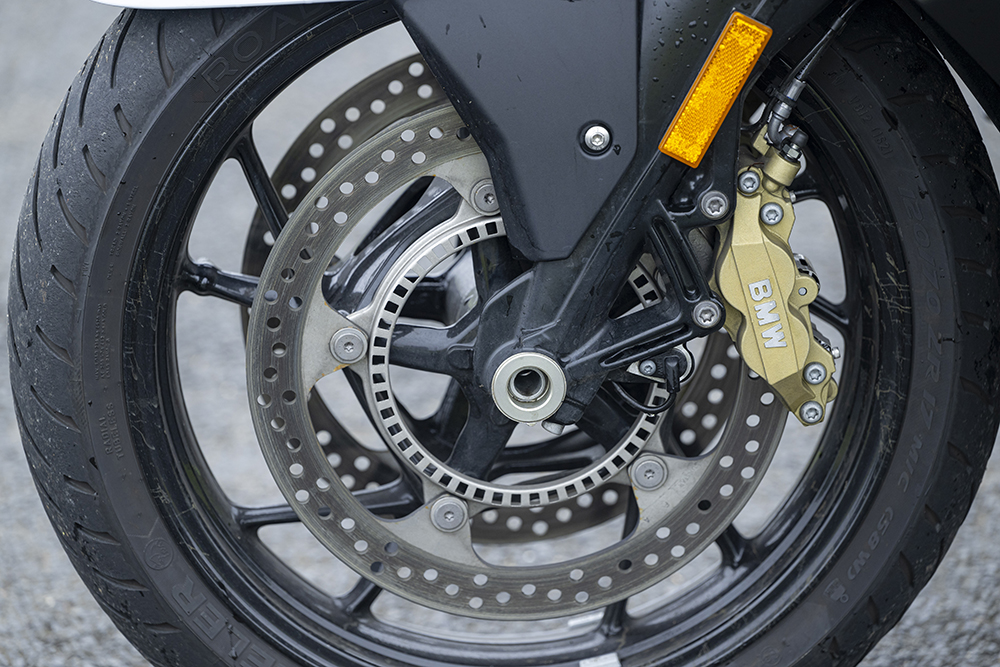
The K 16 runs a hefty 26.5-litre tank that promises to go a long way if the rider is easy on the throttle. But I say bugger it! Wring its neck and have some fun because I found the seat rather average in the comfort stakes after about an hour, which is disappointing for a bike of its ilk. The seat height is adjustable between 810mm and 830mm, and there are several different seat options in the BMW catalogue, so perhaps one of those would be nicer on the toosh.

BMW claims a fuel consumption figure of 5.9L/100km, which is on the optimistic side. My measurements returned a combined ‘getting the hell out of the city and into the sticks’ average of 6.3L/100km, although that increased to 6.8L/100km when I went out to play.
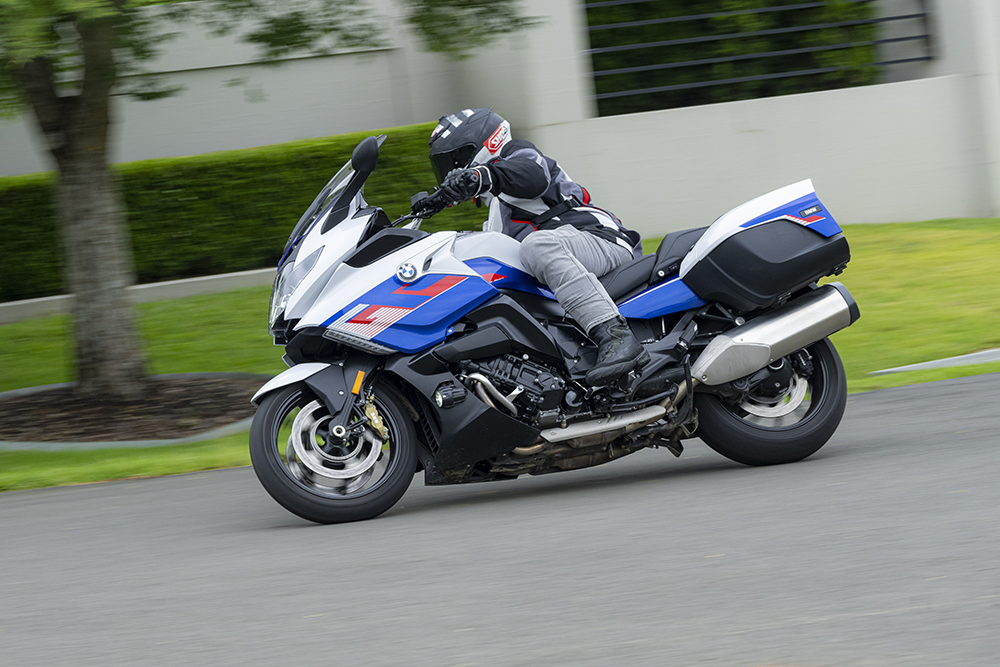
Being such a big lug, the K 1600 GT comes equipped with a reverse gear among its many nifty gadgets, which is appreciated because pushing the thing backwards up hill will probably cause you a hernia.
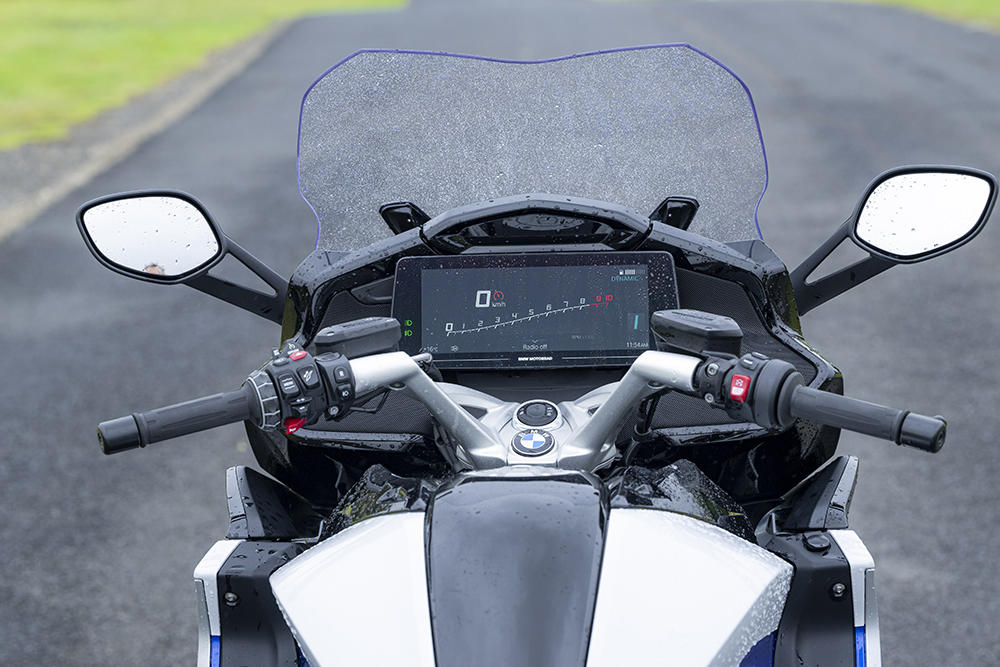
As you’d expect from a machine of such a big mass, the riding position is roomy and there’s plenty of space and supreme comfort afforded to the pillion, too.
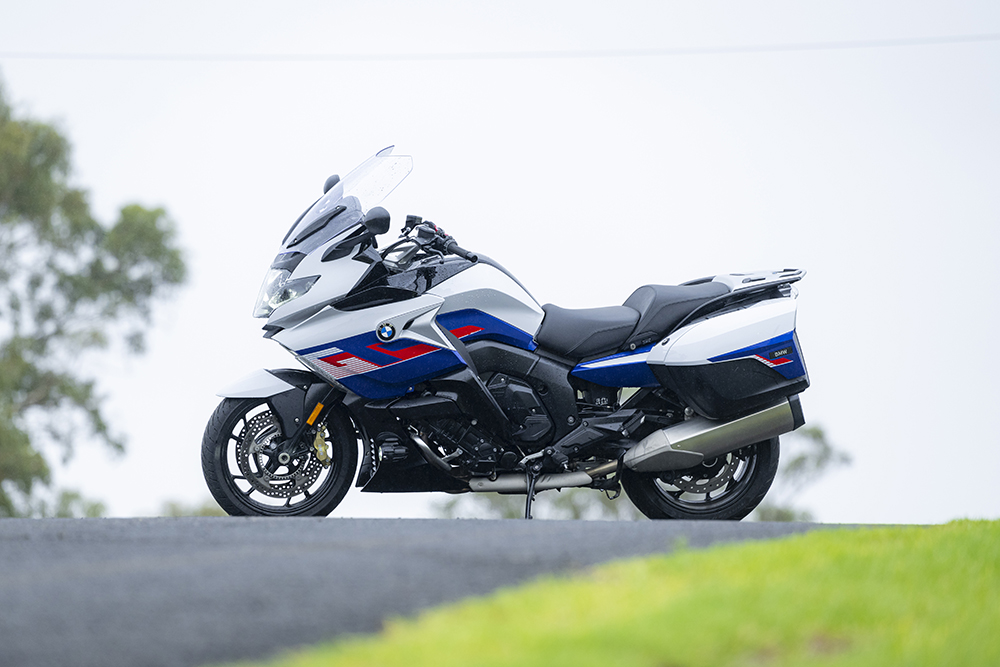
The adjustable screen looks huge, and it is, but even with it fully extended it blew a stream of wind straight at my helmet causing a fairly noisey ride at highway speeds. But I’m tall, at 186cm, and I could only get out of the gale if I tucked down behind the screen, which wasn’t particularly comfortable.
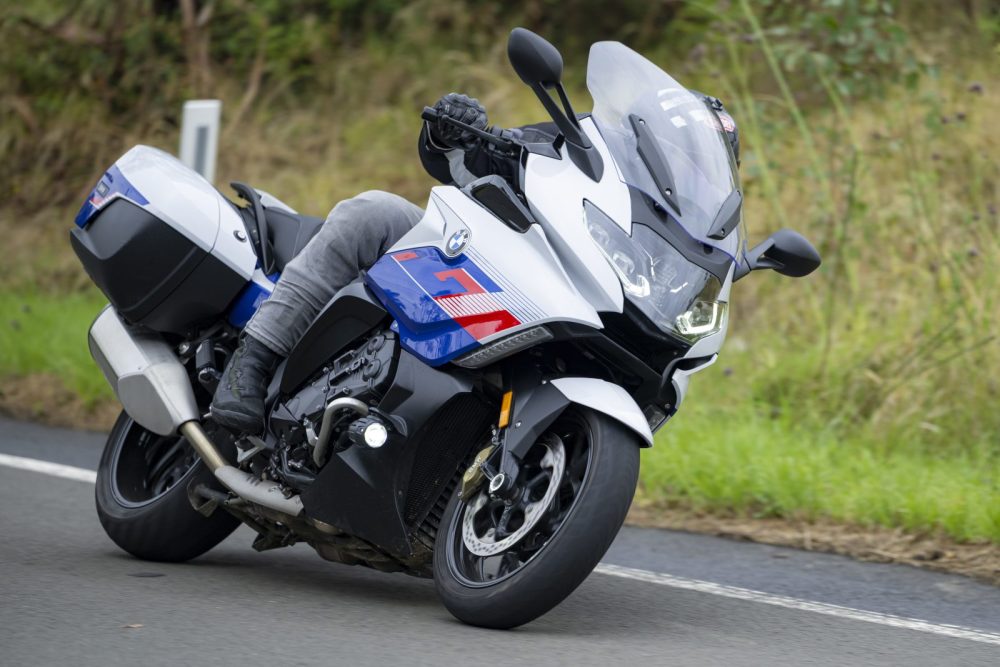
The voluminous fairing does a fantastic job of keeping the elements off the body, and when the temperature drops riders can hide behind the screen, turn the heated grips and seat on, and be quite comfortable – albeit still noisy in the wind.
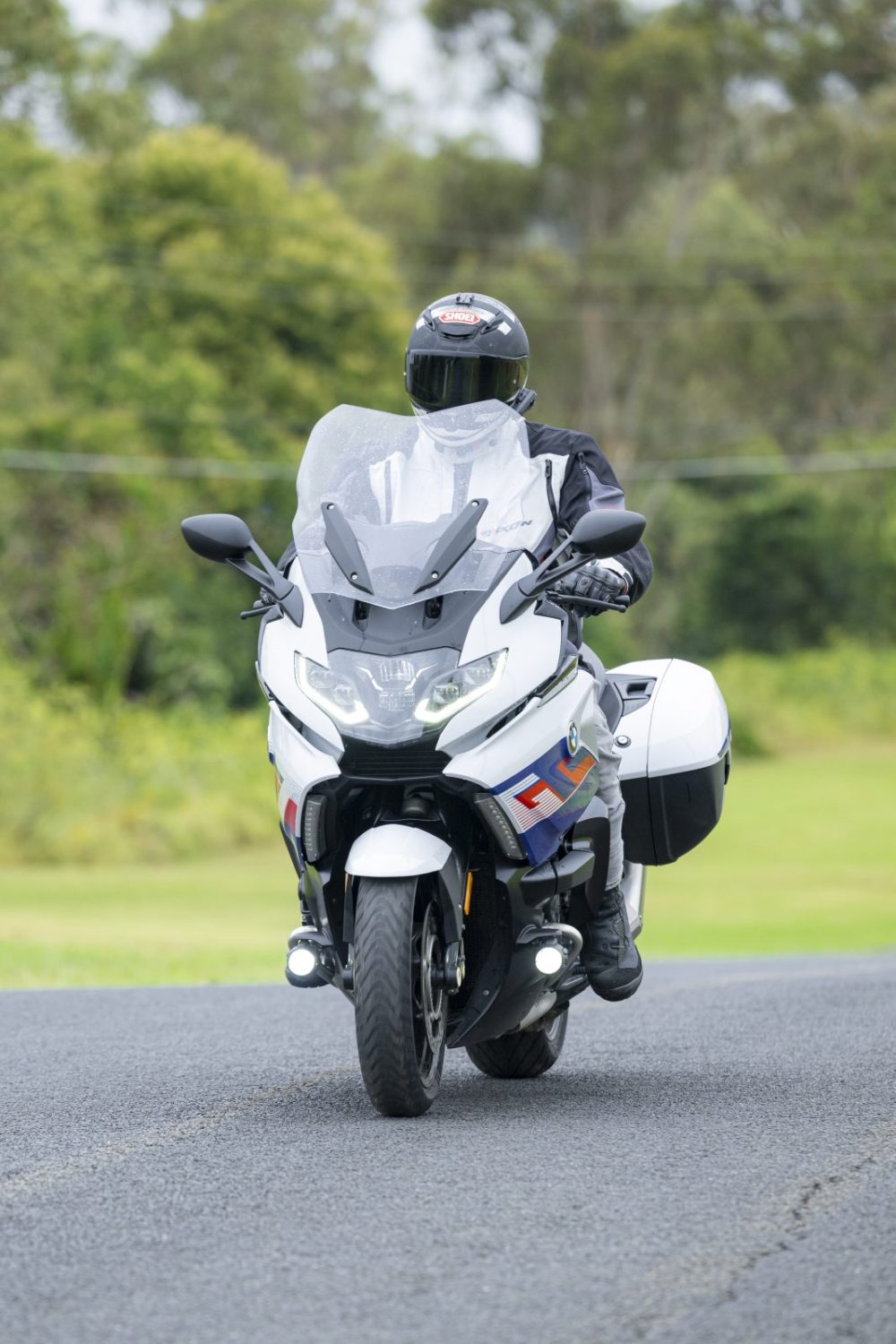
Strangely, the K 16 isn’t the rolling tech lab that you may think. Being at the top of the premium spectrum you’d think it would have all the gizmos at Beemer’s disposal, but there are two key bits of tech you may expect to find on a modern motorcycle of this persuasion and at this price that are missing.

Firstly, there’s no adaptive cruise control and, secondly, no blind spot detection. While they can both be found on other models in the BMW range, they’re not even available as an option on the K 16. Perhaps they’ve been omitted because the tech wasn’t ready when the current model was designed, or perhaps it was a decision in order to keep the price down. It’s a bit of a shame because adaptive cruise is a feature that would lend itself to a rig like this. Having said that, neither of the K 16’s main competitors – the Goldwing or Yamaha FJR1300 – have it yet, either.

I am very fond of the adaptive headlight, which gives a broad spread of light and then swivels to illuminate your way when the IMU senses lean angle. It’s not a system where extra lights come on like on other machines; the actual headlight pivots. And, like the DSA system, it’s also self-levelling. So if a passenger plonks their weight on the back, it’ll lower the headlight beam so it’s not lighting up the tops of trees.

Yet another jewel in that big wide crown is the massive 10.25-inch TFT colour display with integrated map navigation and connectivity. Deadset, my TV is smaller than the Beemer’s dash! Apart from giving you every piece of information that you could ever wish for in a clear, un-glare-effected way, you can connect to your phone via the BMW app which can provide you info about your machine like fuel level and an odometer reading. You can even pull up your previous trips, and there are other nice little features.

There’s so much information that it can be confusing at first, and I did my fair share of swearing at the dash and left-’bar-mounted multi-controller when I tried to tune in a station on the wireless. I recommend grabbing a beer on a sunny weekend and spending some time learning how to use everything properly.
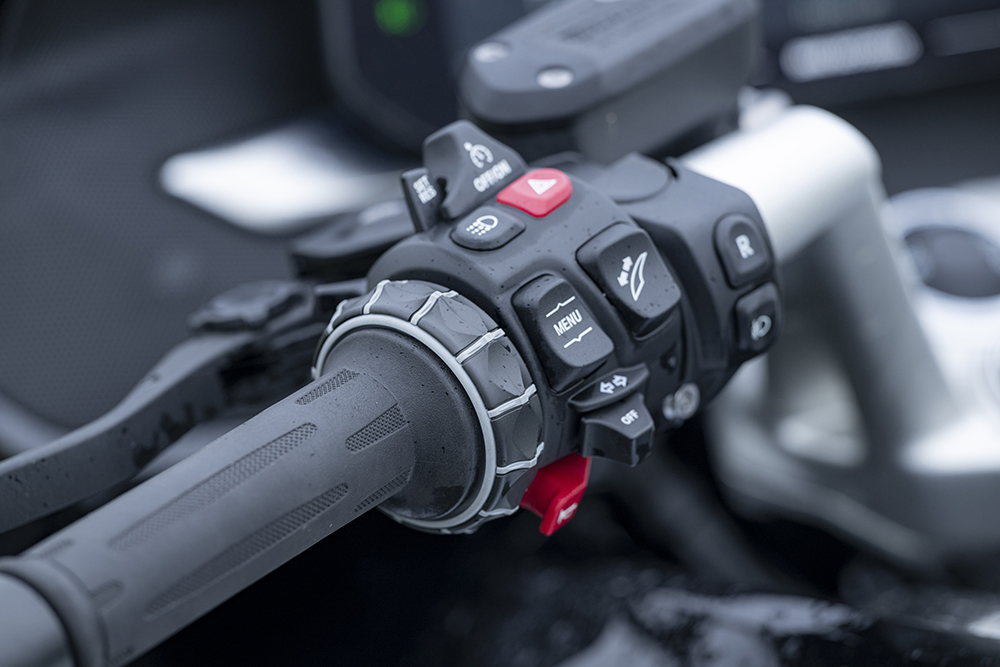
The front and rear speakers in the Goldwing work pretty good and they sound great when you’re sitting near the bike with your mates in the shed, but they are dismal at speed. The K 16 is down a rear set of speakers, relying on fronts only and, to be truthful, at highway speeds they’re useless, especially with that pesky wind blast. But who cares? I reckon speakers in motorcycles are just for wankers who like to show off at traffic lights. If you care about your music, you’re better off getting a helmet-comms system and leave the speaker system for the lights.
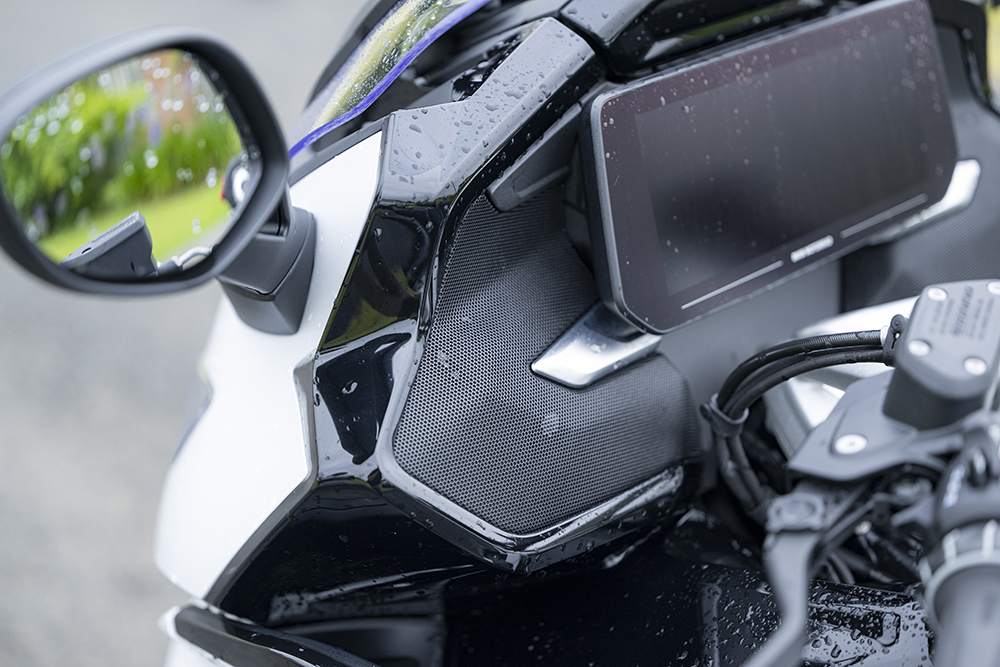
The K 16 comes with central locking. Whether or not that’s BMW giving you solutions to problems you never knew you had, at the risk of sounding like an old man it’s a feature I love. The system locks via a button either on the switchblock or on the key fob, with one button locking the panniers and cubbyholes in the side of the fairings. I hate panniers that force me to lock them before I can take the key out and then stuff around looking for the key to unlock them while juggling my groceries, so being able to walk off without locking them at all is also a bonus in my book.
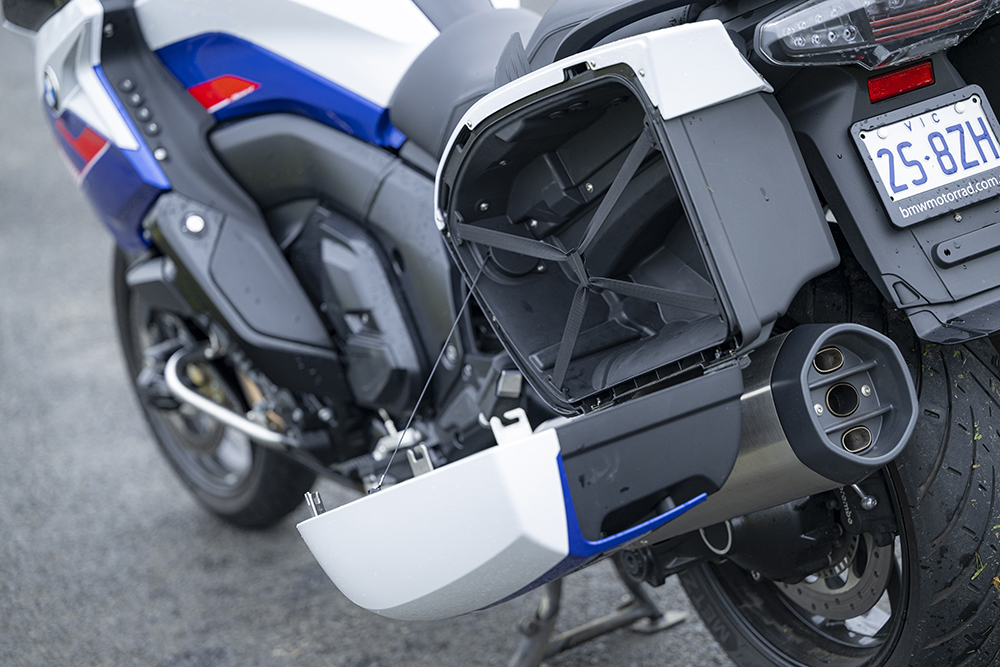
Speaking of storage, there’s another compartment above the dash which offers a power supply to charge your phone – and even has a fan to keep it cool. Two problems though: it’s about the size of a stocky cucumber and my iPhone 13 Pro Max didn’t have a hope of fitting in there, and the screen needs to be in the raised position to open it. This also kind of sucks because when you switch the K 16 off the screen automatically lowers, meaning anything stored in there is staying put until you flick it on and raise the screen. Sure, whatever’s in there is secure when you’re away, but it’s certainly an oversight on an otherwise well thought-out bike.
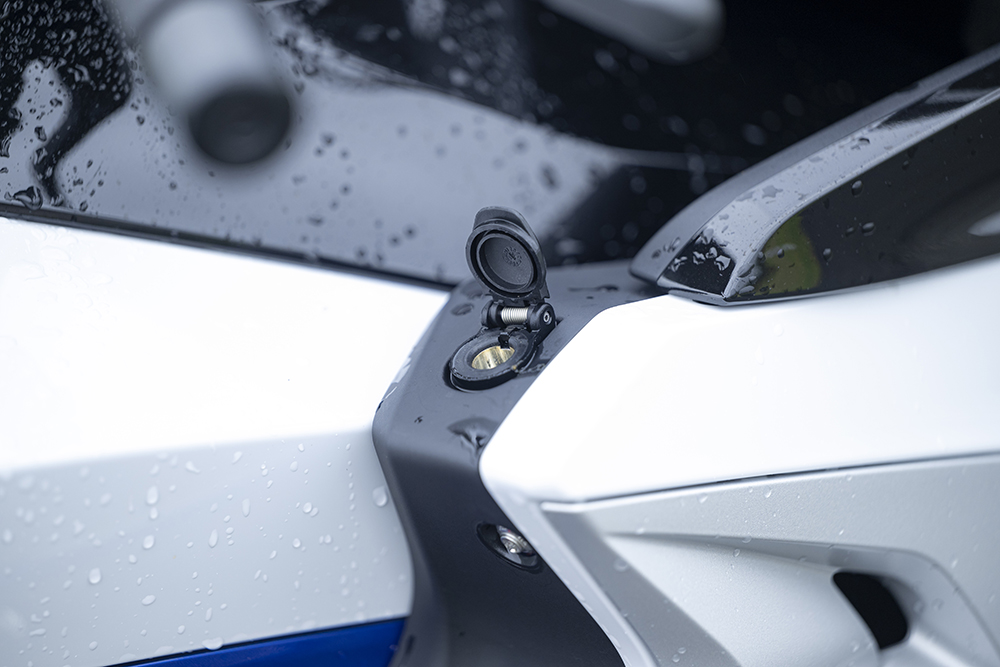
So, is it better than the Goldwing? Yes and no. It’s clearly faster in a straight line and it will leave the ’Wing in its dust when the road gets twisty, too. On the other hand, the ’Wing is more comfortable and offers better protection from the elements for a rider of my height.
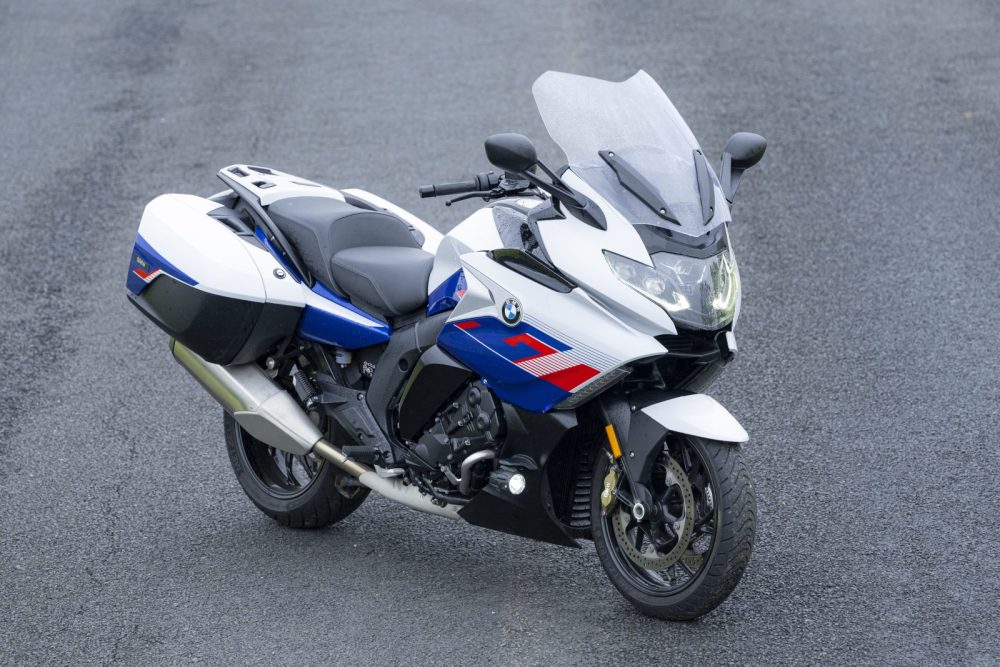
There’s so much to like about the K 1600 GT, none more so than the lustful in-line six-cylinder powerplant and the soundtrack that it emits. It’s not perfect, but if you like to mix some spirited riding in with your long-distance jaunts then the K 1600 GT is definitely the pick of the big-rig bunch.

TEST: PETE VORST PHOTOGRAPHY INCITE IMAGES











